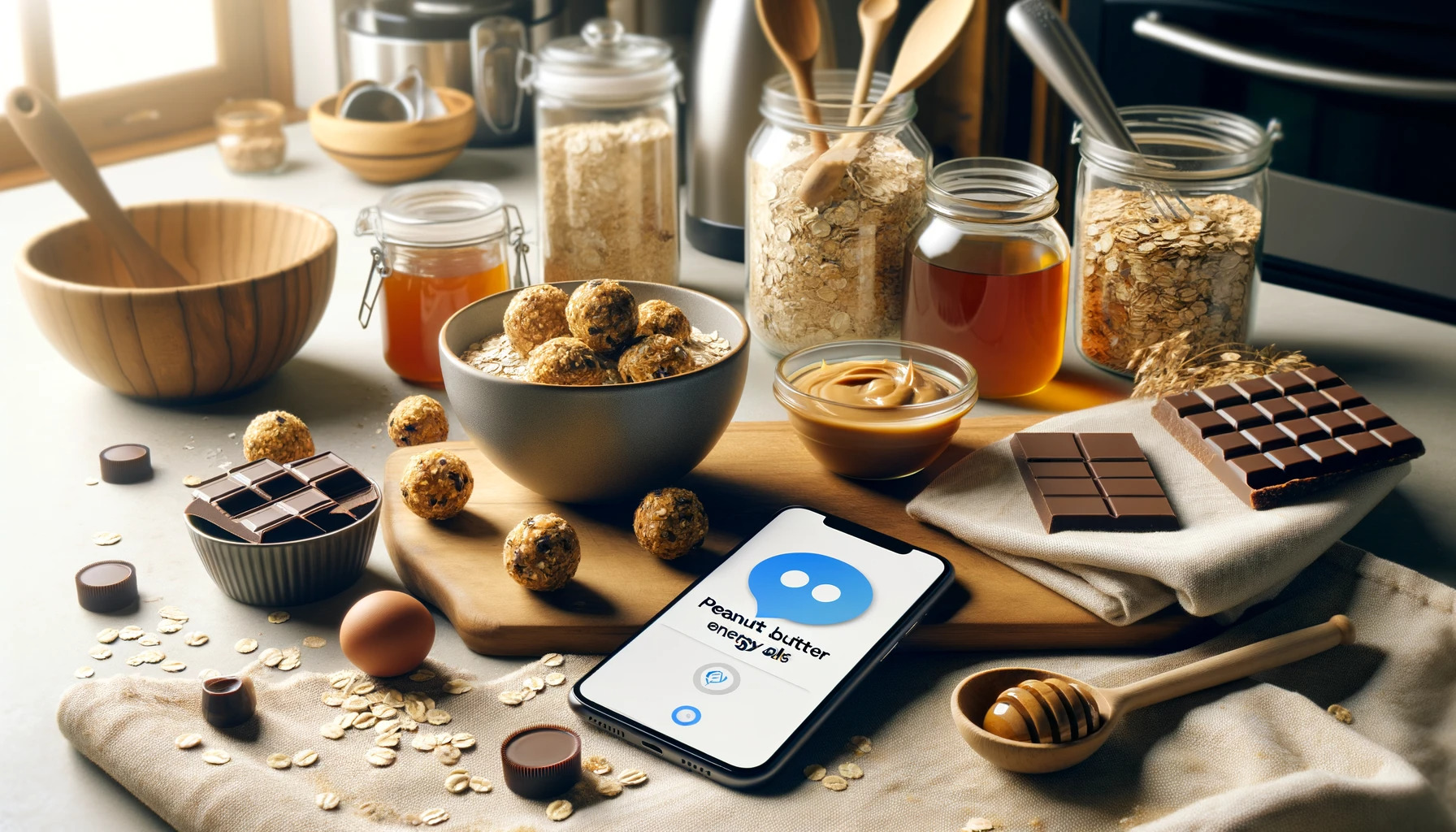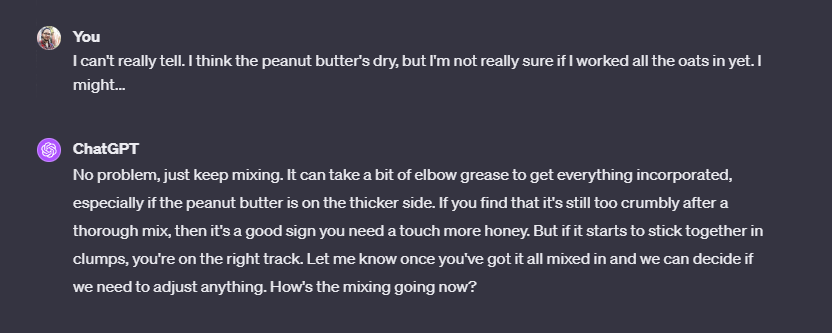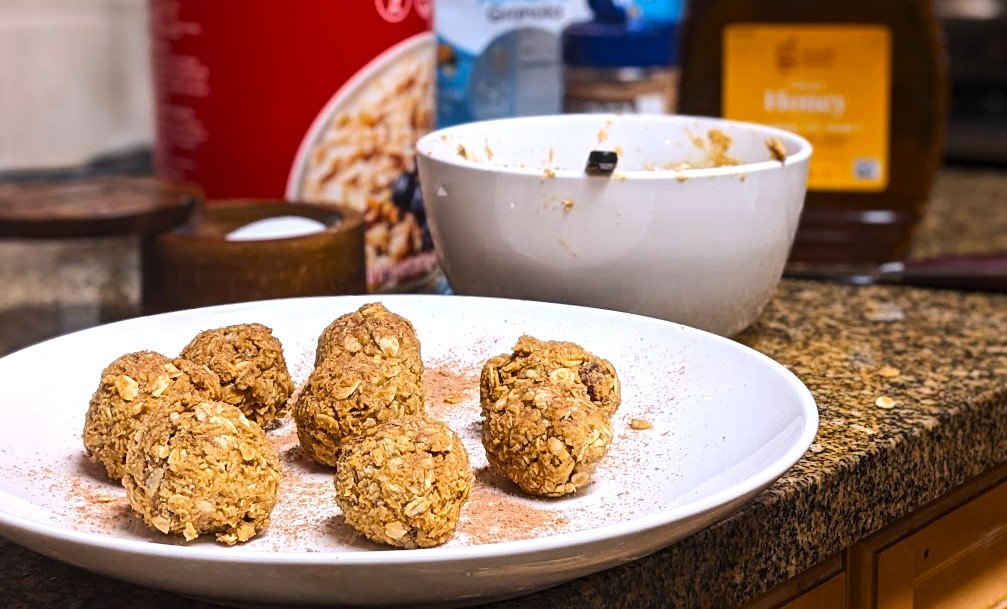
The Quiet Revolution of Voice Technology
We’ve seen them, we own them, a once strange puck of a speaker with a voice used to play a song or set a reminder, all without a single tap on a screen now a bit… dated and limited. But the true potential of voice assistants is only now beginning to unfold. Imagine this: you’re experimenting with a new recipe, your hands are sticky, and you need to know the next step. Instead of washing your hands to scroll through your phone, you simply ask out loud, and the assistant not only reads out the next step but also but gives tips on the process, and talk through issues your having and isn’t just repeating ingredients to you. I immediately know something was different when the chat said “let me know when you’re done with that” and then, without prompting further pauses, and follows up with a “how is is mixing the dry ingredients going?”.
The GPT voice assistant represents a significant leap in the field of artificial intelligence, enabling users to engage in voice conversations with the ChatGPT model with the pro subscription.
Voice Assistants in the Kitchen: A Test Run
My personal test run with a voice assistant in the kitchen was telling. The voice for the assistant named “Sky,” was pleasant, neither overly robotic nor unnaturally human. See full chat here. I was very impressed with the speed of the TTS (Text to Speech), happening naturally and instantly, which diverges from my experience with natural sounding voices generally taking significant processing time. “Sky,” has four counterparts—each with distinct tones and inflections. With a some left over pantry items I decided to try some Oatmeal “power” balls (never sure what is so powerful about them). The experience was smooth, with “Sky” understanding my context and providing step-by-step instructions. When I veered off-script, she gently steered me back on track. It was like having a patient chef by my side, one who didn’t mind repeating herself or waiting while I chopped chocolate.

Navigating the nuances of a new recipe with the assistance of “Sky,” the GPT enabled voice assistant, transformed my kitchen into an interactive cooking show where I played the starring role. As we tackled the creation of peanut butter energy balls, “Sky” acted as a culinary anchor, dispensing wisdom in digestible chunks. From the outset, her guidance was indispensable, providing a custom recipe that catered to the ingredients at hand.
This exchange is not a testament to the assistant’s technical prowess but I think is to Open.ai’s design for empathy and user engagement, turning the task of recipe-following into a dialogue rather than a monologue.

(okay I admit it, the post header isn’t my real kitchen ¯\_(ツ)_/¯ )
Beyond the Kitchen: Versatile Applications
The kitchen is just the beginning. Voice assistants are poised to revolutionize how we work. Imagine coding with a voice assistant that not only understands your verbalized code but also suggests optimizations and searches for debugging information. It’s not about replacing the keyboard but enhancing the coding experience, making it more fluid and intuitive.
However, the benefits aren’t just for the tech-savvy. These assistants have significant implications for accessibility. For those with physical limitations or visual impairments, voice technology can provide a level of independence that touchscreens and mice cannot offer.
Mobile Exclusive
Currently, voice assistants are predominantly available on iOS and Android for paid subscribers with beta access, which raises questions about the digital divide. How do we ensure that this technology benefits everyone, not just those who can afford the latest gadgets or subscription services? This feature has been integrated into the ChatGPT app, which can be enabled from the ‘Settings’ under ‘New Features’. By activating the ‘Voice Conversations’ toggle and tapping the ‘Headphone’ icon, users can start interacting with ChatGPT using their voice, enhancing the machine-human interaction experience
Improving the Experience
One area of potential improvement for voice assistants is the incorporation of a text chat display. While voice interaction is the primary mode, having the ability to read and review previous interactions could enhance user understanding and provide a reference point, much like subtitles in a movie.
Privacy Considerations
As we invite these assistants into our homes and workplaces, privacy concerns bubble to the surface. Voice data is sensitive, and its protection is paramount. Transparency from companies about how they handle this data and user control over their information are critical issues that need addressing.
The Future is Speaking
The future of voice technology is not a question of “if” but “when.” As we barrel towards a world where our voices become the primary tool for interaction with technology, we must consider the broader implications. How will voice technology shape our behavior, our privacy, our accessibility to information?
The voice assistant in your kitchen, guiding you through recipes, is just the beginning. It’s a step into a future where technology listens, understands, and acts, all without us having to lift a finger. It’s a future that’s not only convenient but also inclusive, efficient, and, if managed carefully, private. The voice revolution is here, and it’s clear that it has much to say.
Peanut Butter Energy Balls Recipe
Prep Time: 10 mins | Chill Time: 30 mins | Total Time: 40 mins | Servings: Approx. 15 balls
Ingredients:
- 1 cup of oats
- 1/2 cup of granola
- 1/2 cup of peanut butter
- Honey (to taste)
- 1 chocolate bar (size of choice)
Instructions:
- Prepare the Base: In a large mixing bowl, combine 1 cup of oats with 1/2 cup of granola. This mixture will give your energy balls a hearty texture and a good bite.
- Bind with Peanut Butter and Honey: Add 1/2 cup of peanut butter to the mix for a creamy consistency. Squeeze in honey according to taste; start with a couple of tablespoons and increase if needed. The honey acts as a natural sweetener and binder.
- Add Chocolate Chunks: Chop up your favorite chocolate bar into small pieces. Fold these chocolate chunks into the mixture for a surprise burst of flavor in every bite.
- Adjust the Consistency: If your mixture feels too crumbly, add a bit more honey or peanut butter. The goal is a sticky, cohesive mixture that will hold together when pressed.
- Form the Balls: Once your mixture is well combined and sticky, roll it into small, bite-sized balls with your hands.
- Chill to Set: Place the rolled balls onto a baking sheet lined with parchment paper. Refrigerate for at least 30 minutes to allow them to set and firm up.
Enjoy these as a quick snack, a post-workout boost, or even as a sweet treat that doesn’t skimp on nutrition!
Full GPT Chat HERE


2 Responses
Hey people!!!!!
Good mood and good luck to everyone!!!!!
Hey people!!!!!
Good mood and good luck to everyone!!!!!